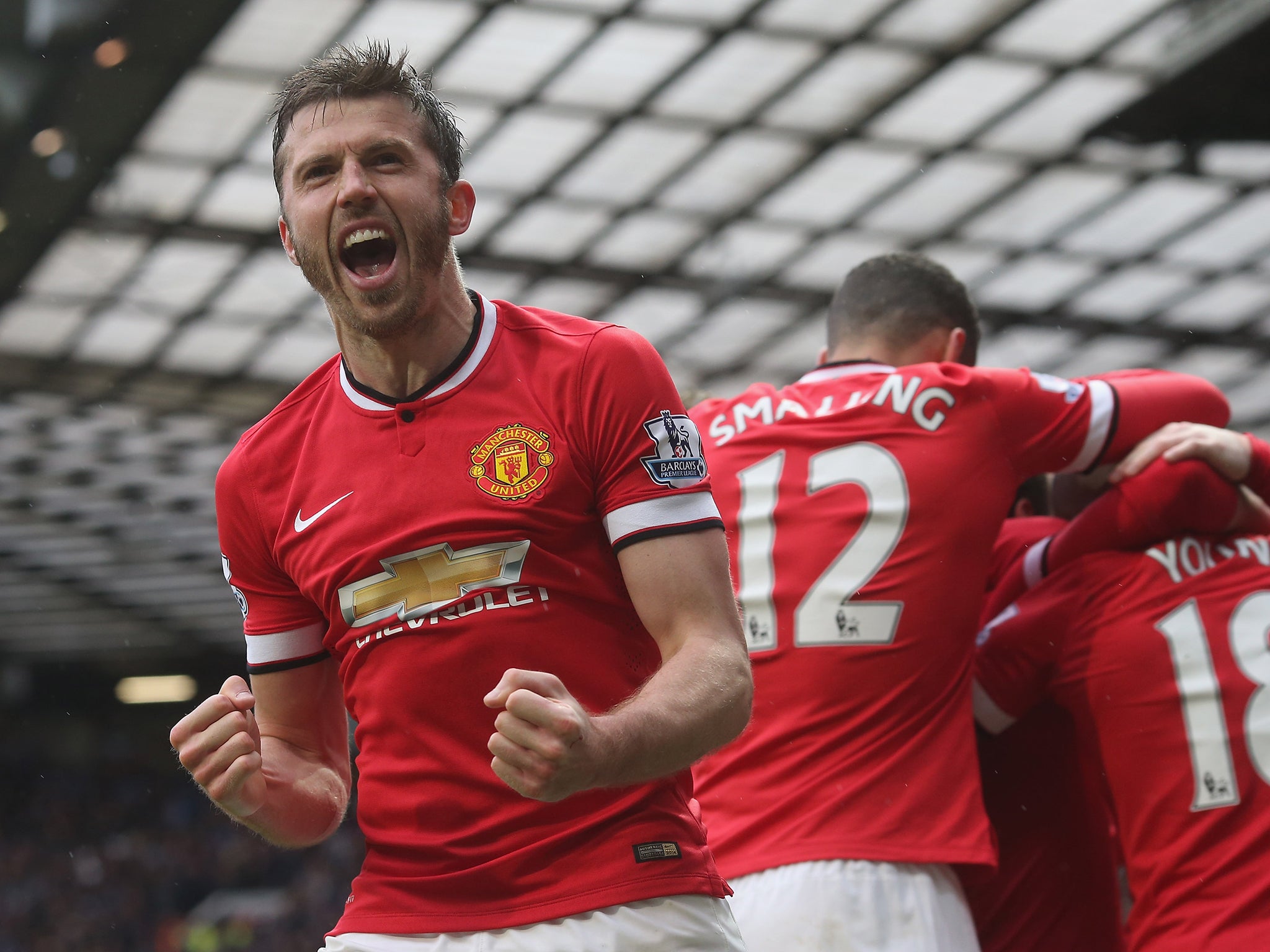Manchester United's dip in form can be put down to one significant factor – the absence of Michael Carrick
ANALYSIS: Danny Higginbotham analyses why Manchester United, who play Crystal Palace this weekend, have lost their last three in a row

There was only ever one thing on our minds when it came to playing Manchester United during the years at Stoke when we were working to hold our place in the Premier League – Paul Scholes.
In the dressing room before each game the mantra would always be: “Whatever happens, when Scholes gets the ball, don’t let him get his head up for a second to pick a pass.” Because he would. Our Britannia Stadium had the smallest pitch in the league but he made it like Wembley. You could be marking him and the target of his pass as tightly as you liked but give him a second and he’d find him.
Michael Carrick isn’t Scholes, of course, but he’s the closest United have got now and a very rare commodity in European football, with his ability to find a pass the way he does. And it’s been his absence from Manchester United’s team for the last month with injury that has contributed to their tactical system being found out in that time.
Teams’ ability to work out how to deal with the current system explains why United are facing the possibility of a first four-game losing sequence since the 1978-79 season at Crystal Palace on Saturday evening.
The unravelling of the current system goes like this: whether people like it or not, Marouane Fellaini has been one of United’s main outlets as they have found form and surged towards the Champions League spots this spring. But Fellaini creates maximum danger when United have a midfielder, Carrick, who can pick him out with a long pass and the Belgian can use his aerial threat, stretching the game in the process.
While Carrick has been missing – and on Friday he was ruled out for the rest of the season – it’s been very different. United lack a player capable of picking out Fellaini in this way, and that’s what has resulted in Chelsea and Everton giving United time on the ball – five or 10 yards of free space – in midfield. Opponents are saying: “OK. We don’t fear that midfield. We don’t think Daley Blind or Ander Herrera are going to find Fellaini from distance. We’ll let them advance.” And in a subtle process of cause and effect, this means the passes to Fellaini are coming from just 15 yards or so – a distance from which those passes can’t be put in the air. Fellaini becomes just a normal ball-player on the floor. He becomes a far less dangerous proposition.
You’d be surprised how the absence of one player can have such an effect on a game of football. When Carrick is present, we see midfields getting tight on him. But defences’ concerns about Fellaini’s aerial threat mean they are dropping off at the same time.
Carrick provides the defensive shield, too, and has the ability to dictate the game: knowing when to speed it up and slow it down. It’s no coincidence that United have conceded two or more goals on five of the occasions Carrick has not played and have not conceded more than one in the Premier League when he has started. He protects the centre-backs and picks up the floater operating just behind the centre-forward.
What we have seen Chelsea, Everton and West Bromwich Albion do against United in the three consecutive defeats for Louis van Gaal’s team is have the confidence to drop back, let United have a lot of the ball, frustrate them, and then hit them on the counter-attack. It means that United need to find another way of winning as they enter these last three matches, with Arsenal and Hull to follow and four points between them and fifth-placed Liverpool.
The new system needs to revolve around width. What we saw in the defeat to West Bromwich last week was a lack of that commodity. Juan Mata was tucking in from the right but Antonio Valencia, behind him, wasn’t getting forward much, while Blind, at left-back, didn’t have much forward impetus either.
We’ve discussed in these pages before the waste of attacking potential that the failure to get Angel Di Maria working wide left, running at his full-back in his natural domain, constitutes. Van Gaal needs to get Di Maria out there on the left and Ashley Young on the right, using his pace as he has done through his own excellent season. You may extinguish the threat through the middle but get the ball wide and you can isolate the full-backs. I certainly wouldn’t want Di Maria or Young running at me.
Manchester United: Potential transfer targets summer 2015
Show all 10Palace’s own game is built on counter-attacking. They have accumulated more points way from Selhurst Park than at home and have pace in the form of Jason Puncheon and Yannick Bolasie. If United stick to the system that has started failing them, they are asking for more of the same trouble. There needs to be an acceptance that they have been found out and an attempt to try something new as they hit the home straight.
Danny Higginbotham’s autobiography ‘Rise of the Underdog’, published by Trinity Mirror Sport, is out now (£16.99. Kindle £6.99)
Subscribe to Independent Premium to bookmark this article
Want to bookmark your favourite articles and stories to read or reference later? Start your Independent Premium subscription today.

Join our commenting forum
Join thought-provoking conversations, follow other Independent readers and see their replies